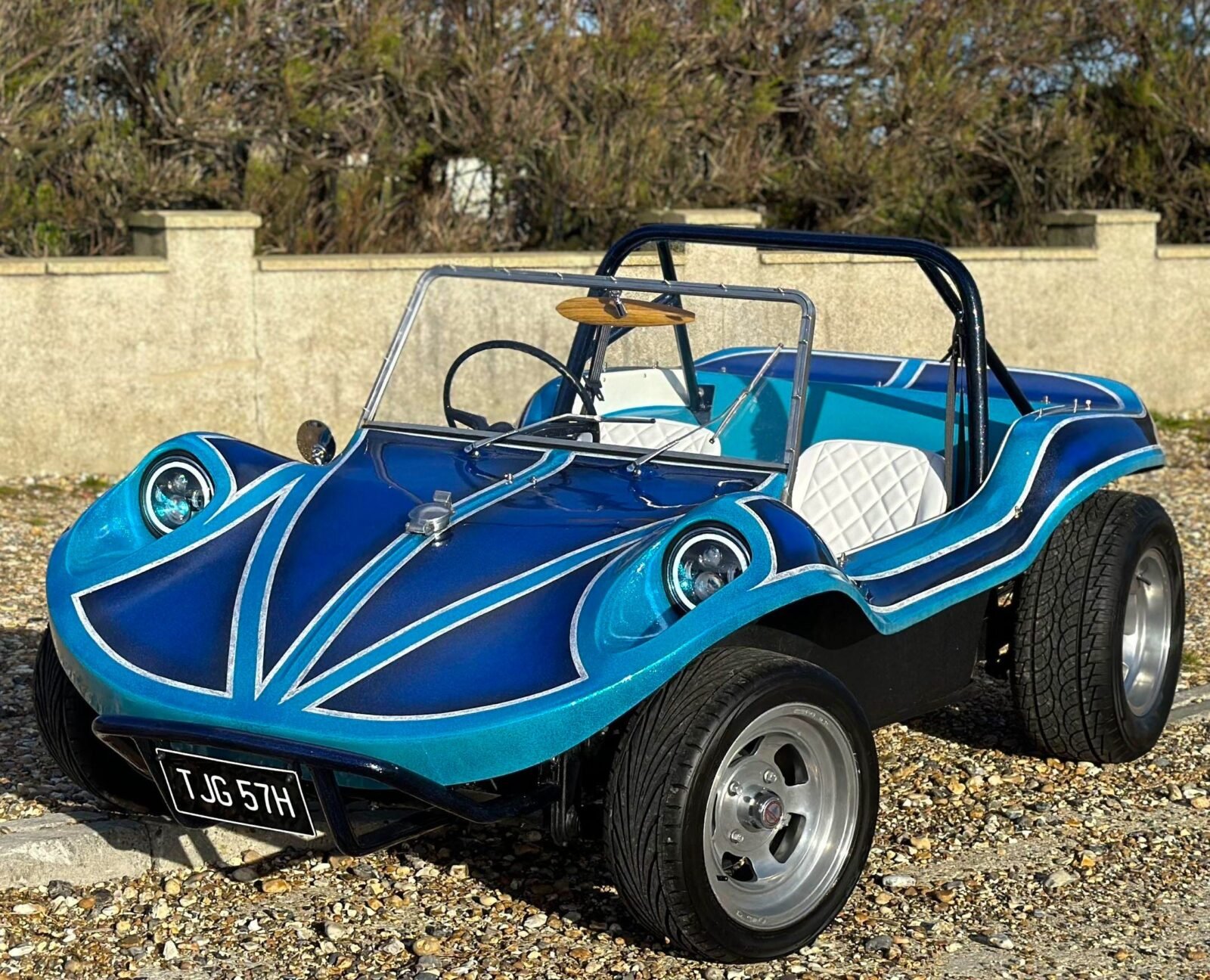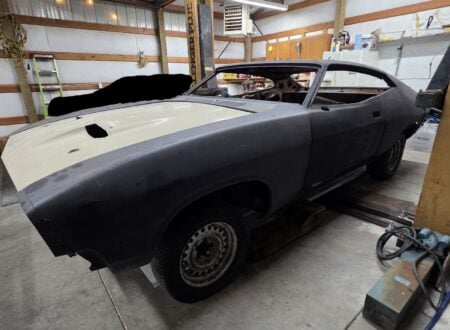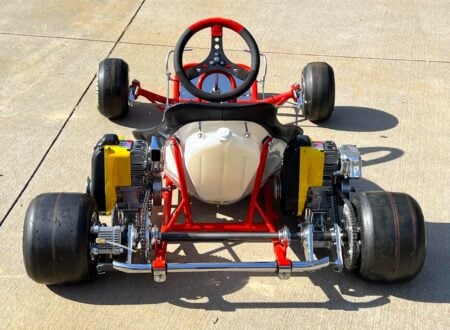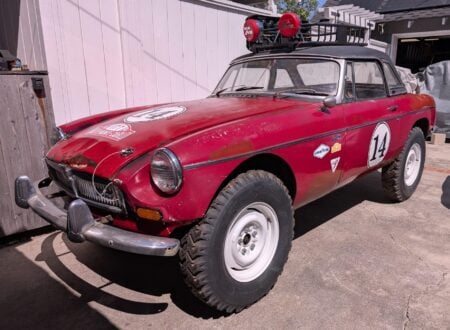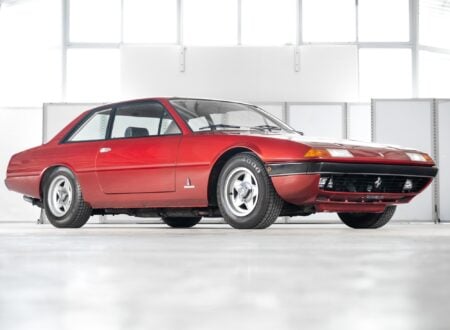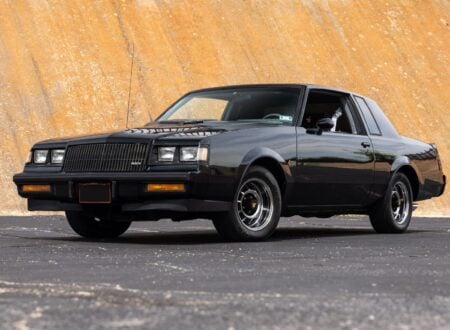This is one of the few surviving examples of the Manta Ray Beach Buggy, it’s a MkII variant from 1970 with a design based on the Dean Jeffries Mantaray II Kyote design that was famously used in the 1968 “Monkees” movie.
Dean Jeffries is one of the largely unsung heroes of America’s booming 1950s and 1960s automotive custom scene. He’s the guy who painted the “Little Bastard” script on James Dean’s Porsche 550 Spyder, he designed a slew of influential cars, including one of the very first Outlaw Porsche 356s.
Fast Facts –The Manta Ray Beach Buggy
- The vehicle shown in this article is a Manta Ray Beach Buggy, it was made in the United Kingdom, its design was closely inspired by the Mantaray II Kyote design penned by Dean Jeffries in the 1960s.
- Both this buggy and the earlier Jeffries design were inspired by the original fiberglass beach buggy – the Meyers Manx, a revolutionary new concept developed by Bruce Meyers in the early 1960s on a shortened VW Beetle floorpan.
- Countless companies sprung up later in the 1960s to essentially copy the original Meyers design, creating an entirely new automotive subculture seemingly overnight. Most of these buggies have now disappeared, long ago succumbing to crashes, chassis rust, and general wear and tear.
- The Manta Ray Beach Buggy shown here is currently being offered for sale out of Sussex in the United Kingdom. It appears to be in excellent shape overall, with eye-catching Canadian Blue and Brilliant Royal Blue custom flake paintwork, Wolfrace slotmags wheels, white diamond stitch seats, and hardwood varnished duckboards.
Beach Buggies: The Origin Of Species
There can be no article written about VW Beetle based beach buggies that doesn’t give appropriate respect to the guy who single-handedly created the entire genre – Bruce Meyers.
Above Video: This full length documentary tells the story of the Meyers Manx, the original fiberglass beach buggy, and it shows many of the variations that were produced.
It almost seems like Meyers was destined to transform the world of beach buggies. As an engineer, a surfer, and a fiberglass yacht builder he had a unique set of abilities, and he was in the right place at the right time – Southern California in the early 1960s.
As a surfer it’s no surprise that Meyers had an interest in beach buggies, as they allowed quick and easy access to otherwise inaccessible breaks. The primitive nature of the buggies being built at the time, the late 1950s and early 1960s, must have rankled his inner-engineer and so he set out to build something better.
His first design was a masterpiece, but it proved too complex to be reliably mass-produced. It had a fiberglass body that acted as a monocoque structure, with the engine and front/rear suspension bolted directly onto it.
It was almost certainly one of the first composite monocoque tubs ever used in an automotive application, predating the same technique being used by many supercar makers by ~40 years.
For his second design Meyers opted for a simplicity-first approach. He took a VW Beetle floorpan and cut it down to shorten the wheelbase. He then developed a fiberglass tub-style body that bolted on top.
This design proved ideal as it used the Beetle suspension, brakes, engine, steering, and transmission – all of which remained attached to its original fixing points. Beetles were a cheap and easy to source donor at the time, and they could be modified with uprated suspension, improved engines, and larger wheels/tired for use in dunes and on beaches.
The Manta Ray Beach Buggy Shown Here
The buggy shown here is a Manta Ray, one of the countless emulators of the Meyers design that popped up in the 1960s and 1970s. The Manta Ray was developed not in California but in England, surprisingly the fiberglass-bodied beach buggies of California had become popular in Britain and across Europe, sparking the creation of many local manufacturers.
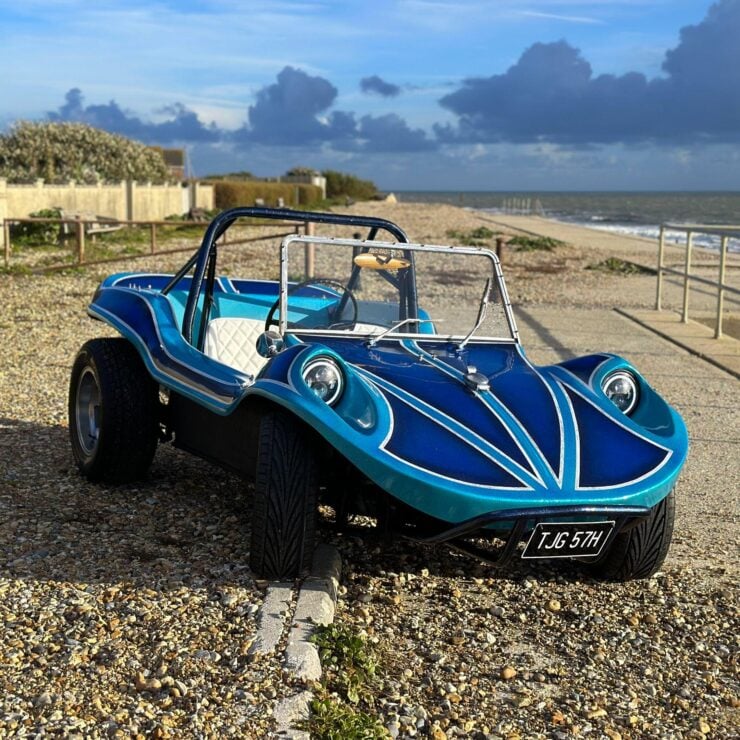 The unusual looking Manta Ray Beach Buggy was closely styled after the Dean Jeffries Mantaray II Kyote design that was famously used in the 1968 “Monkees” movie.
The unusual looking Manta Ray Beach Buggy was closely styled after the Dean Jeffries Mantaray II Kyote design that was famously used in the 1968 “Monkees” movie.Much like the Meyers Manx design, most of these other buggy manufacturers used a VW Beetle platform that had been shortened a few inches. The benefit of the Beetle floorpan is that is has the suspension, brakes, steering, engine, and transmission all in place – so all you need to do it drop a fiberglass body on top and you’re good to go.
Fiberglass has been called the carbon fiber of its time and in many ways it was, if anything it was cheaper and more approachable than carbon composites, but still resulted in strong, stiff, and lightweight structures. Even the likes of Ferrari/Pininfarina/Scaglietti dabbled with fiberglass bodies on cars like the Ferrari 308 GTB “Vetroresina.”
The body of the Manta Ray was closely inspired by the Dean Jeffries Mantaray II Kyote design mentioned in the introduction. This Jeffries-designed buggy was used in the 1968 “Monkees” movie which was seen extensively in the UK, and may have led to the formation of the company behind the British Manta Rays.
The 1970 Manta Ray shown in this article is a MkII version finished in Canadian Blue and Brilliant Royal Blue custom flake paintwork, it has Wolfrace slotmags wheels, white diamond stitch seats, and hardwood varnished duckboards.
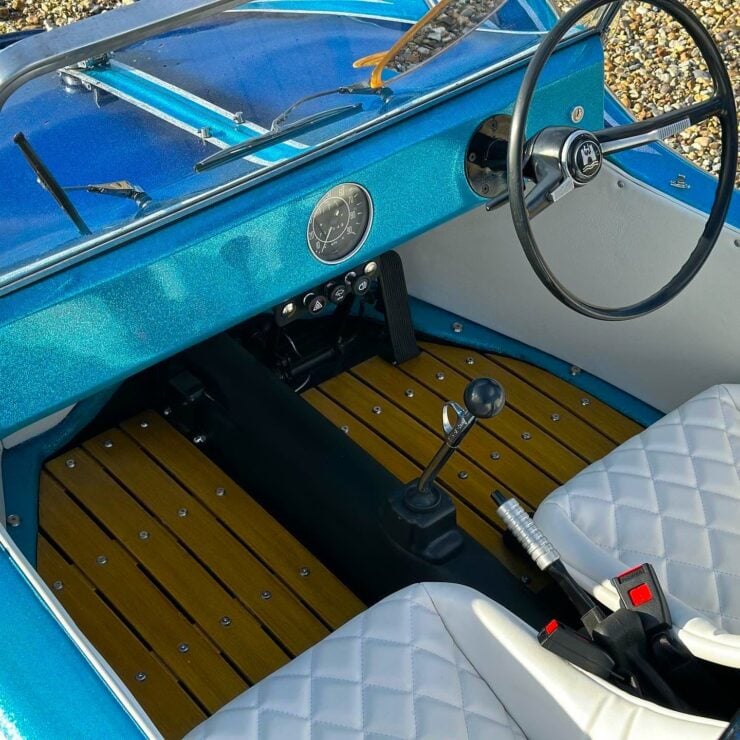 This buggy appears to be in excellent condition throughout, with Wolfrace slotmags wheels, white diamond stitch seats, and hardwood varnished duckboards.
This buggy appears to be in excellent condition throughout, with Wolfrace slotmags wheels, white diamond stitch seats, and hardwood varnished duckboards.Power is provided by a 1.3 liter twin port VW engine, an air-cooled flat-four of course, with twin EMPI 34 ICT carburetors, and a manual 4-speed transmission. The car has a front disc brake conversion, with rear drums still in place, the engine has a chrome dress up kit, and there is a rear bench seat that can hold two people, perhaps three in a pinch.
This Manta Ray Beach Buggy is now being offered for sale on Car & Classic out of Sussex in the United Kingdom. If you’d like to read more about it or register to bid you can visit the listing here.
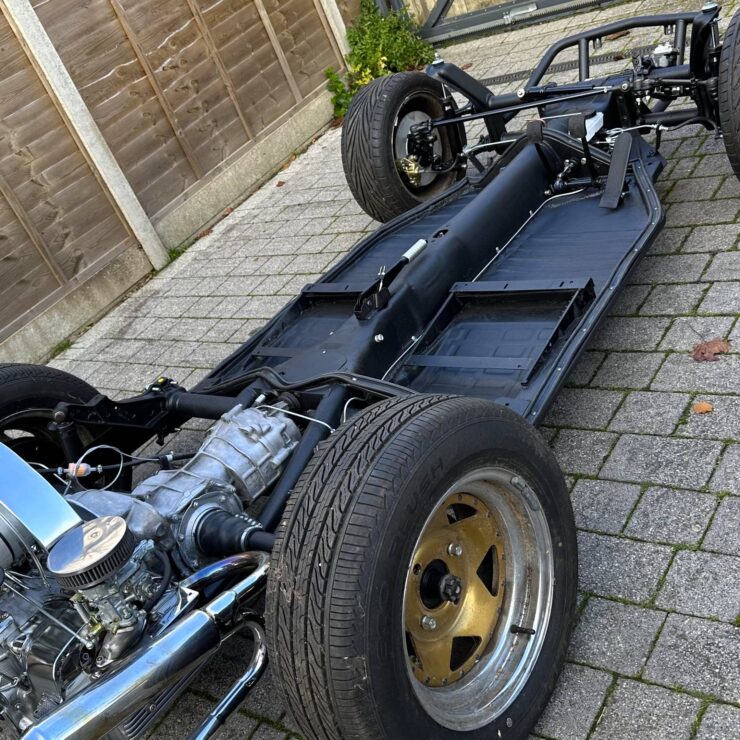
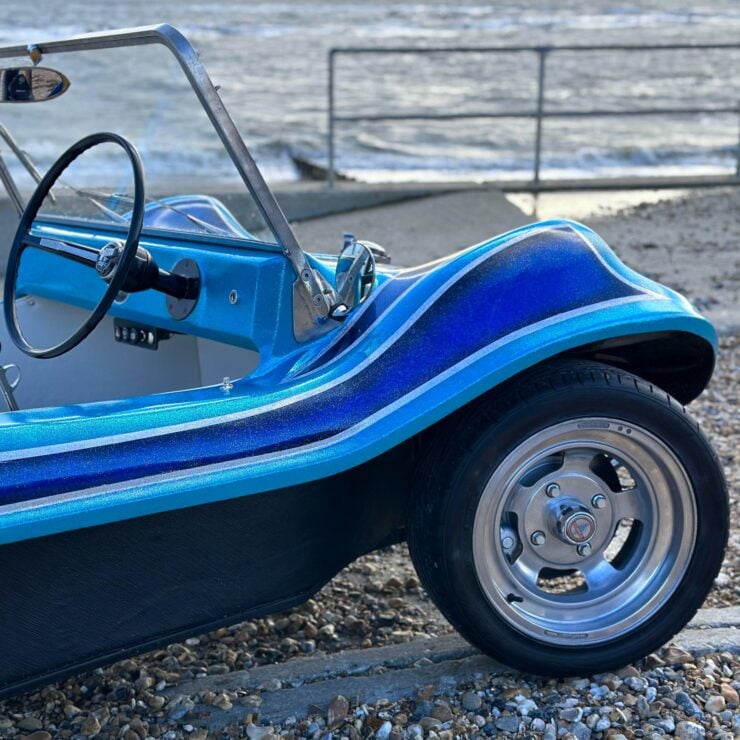
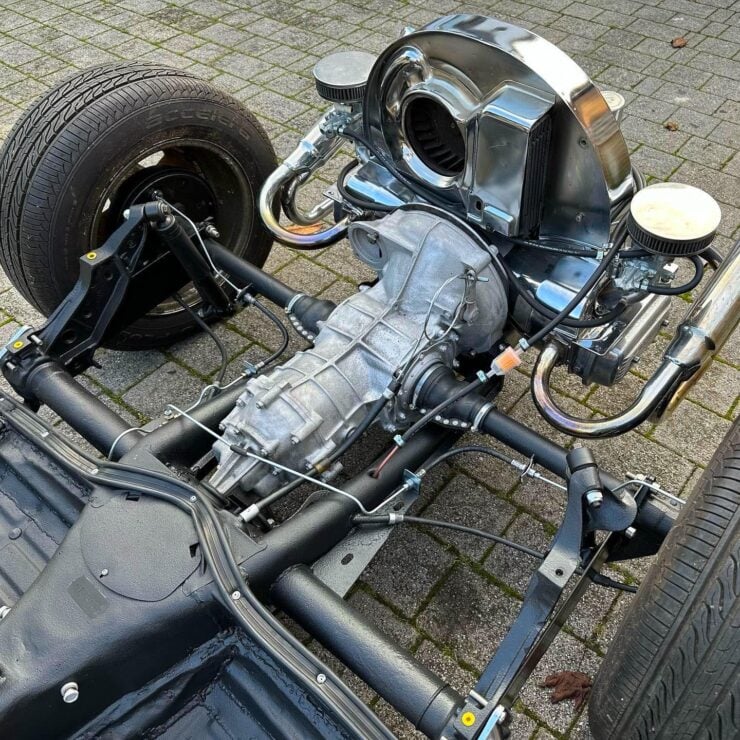
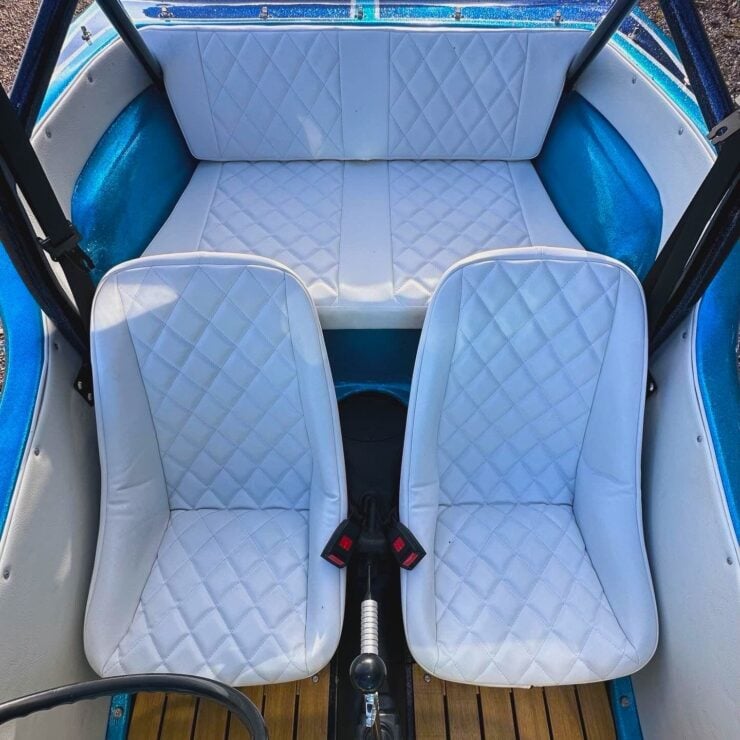
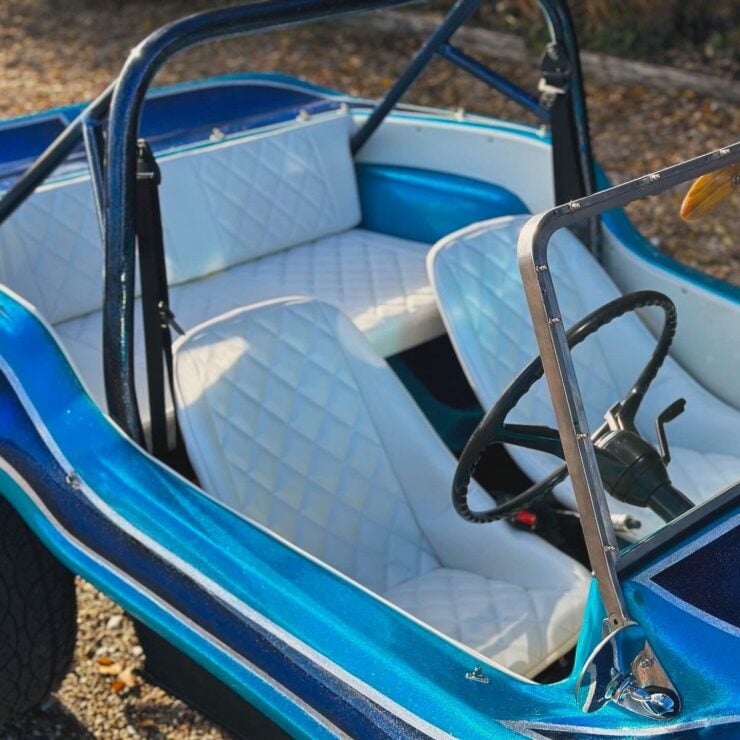
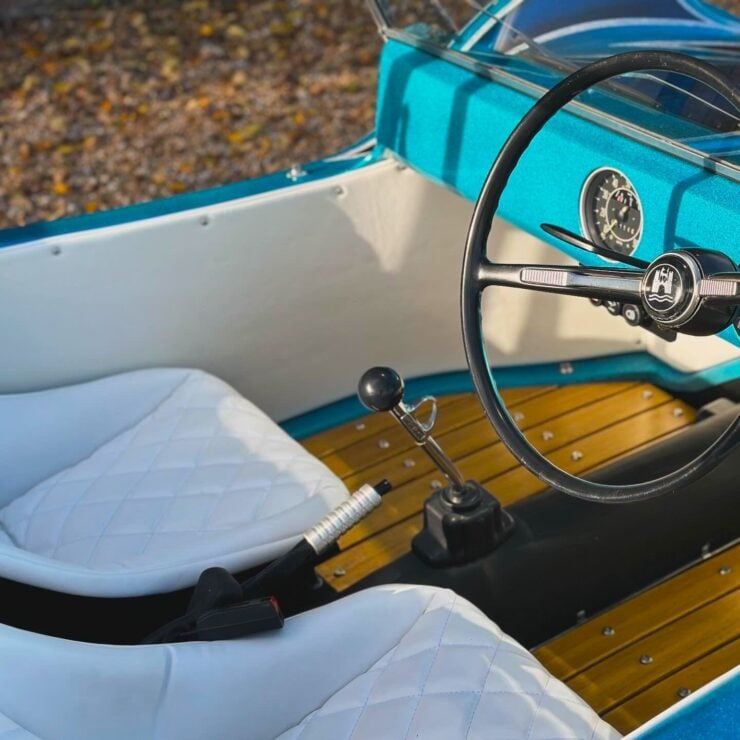
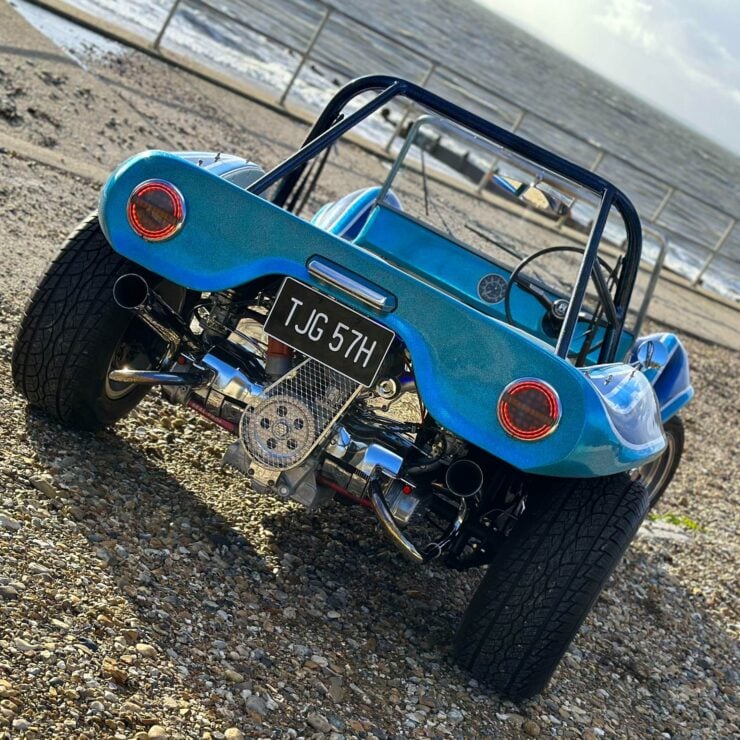
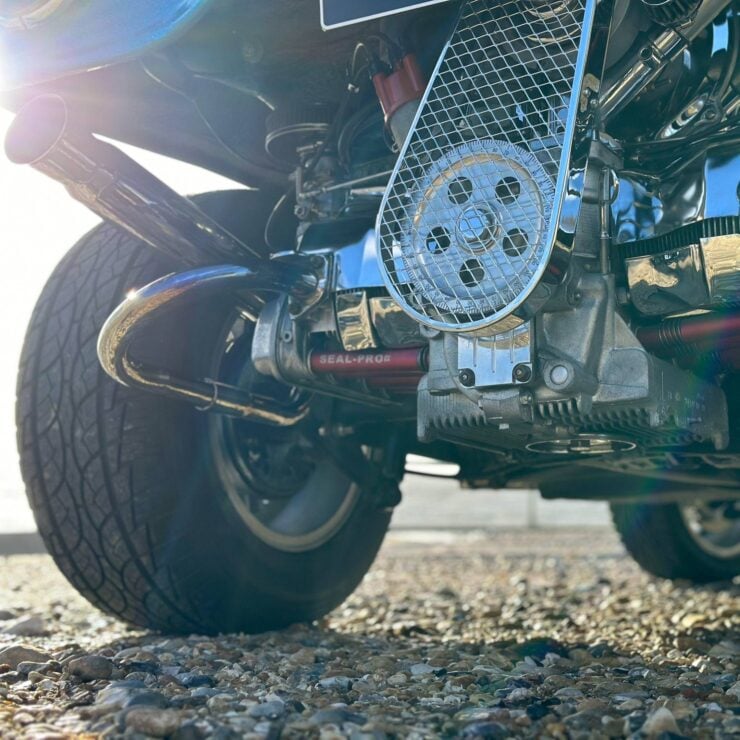
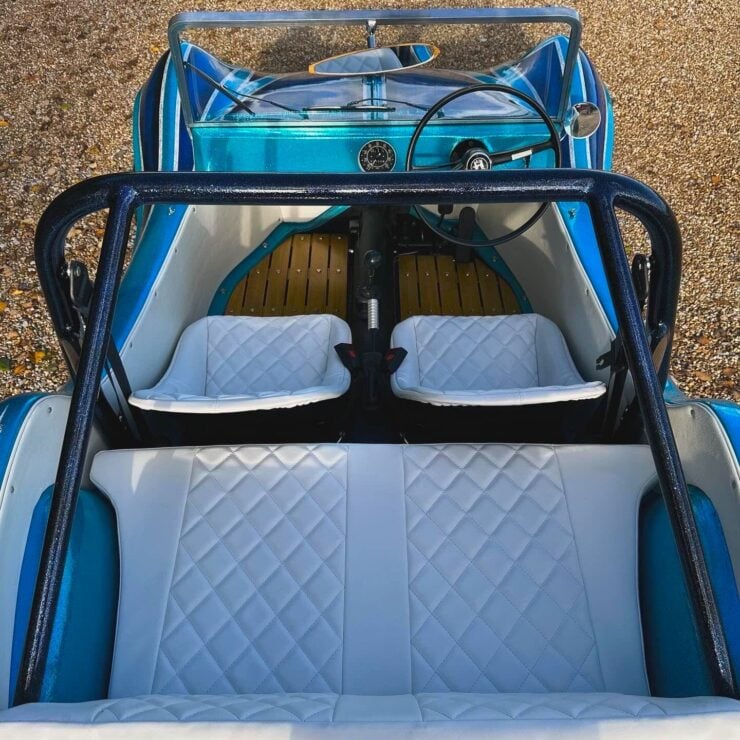
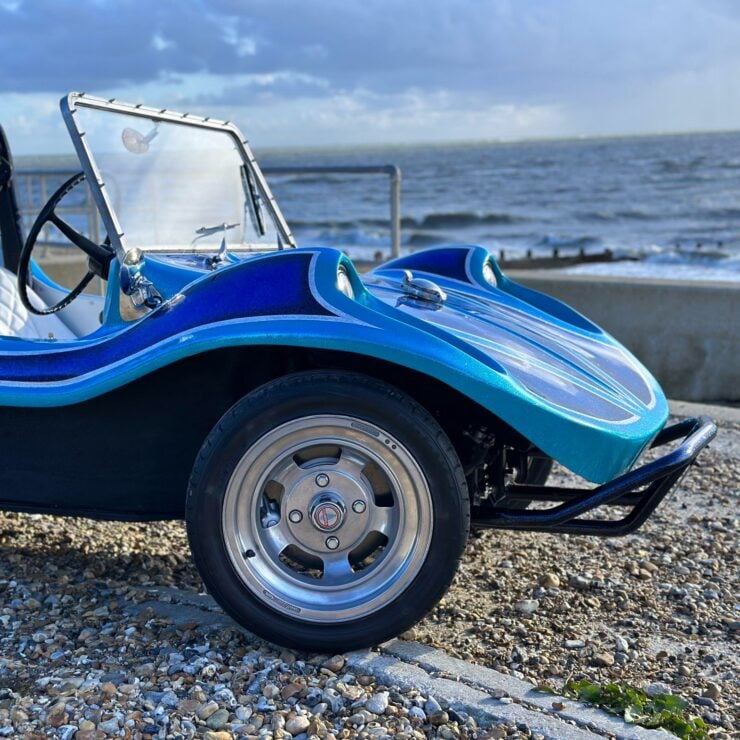
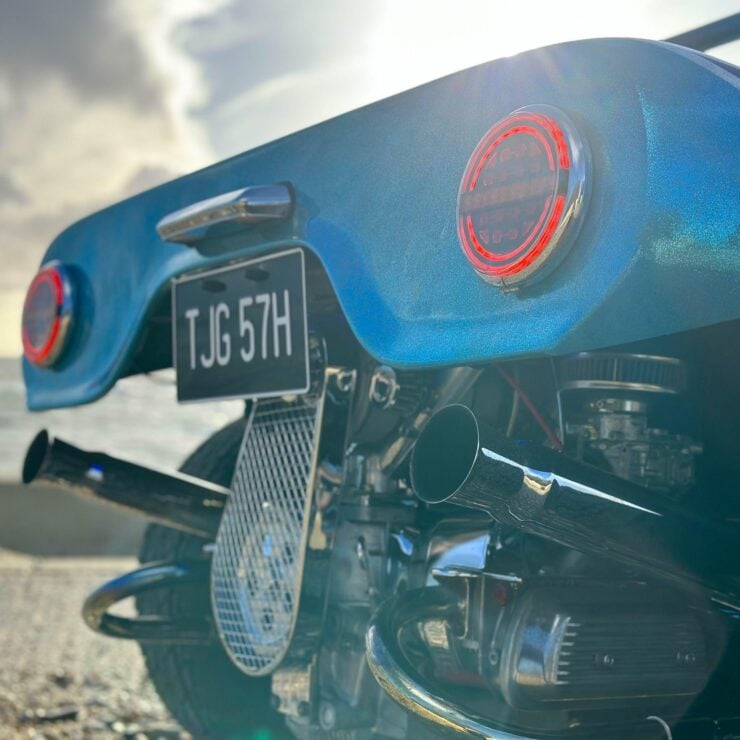
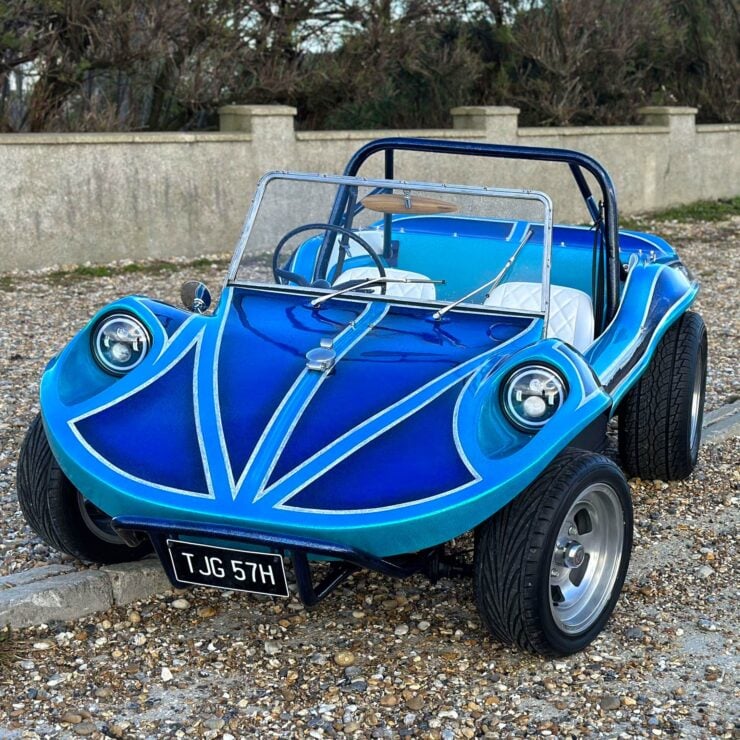
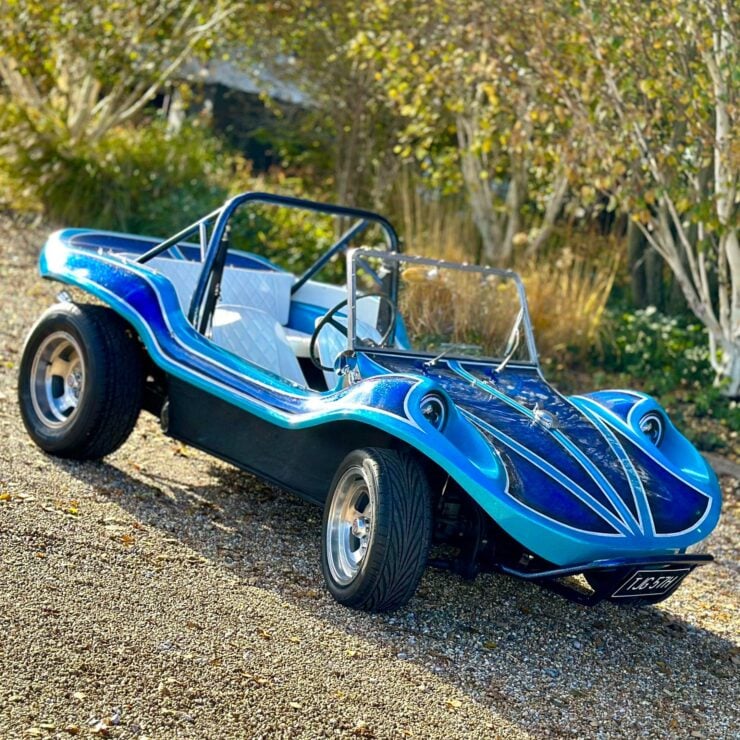
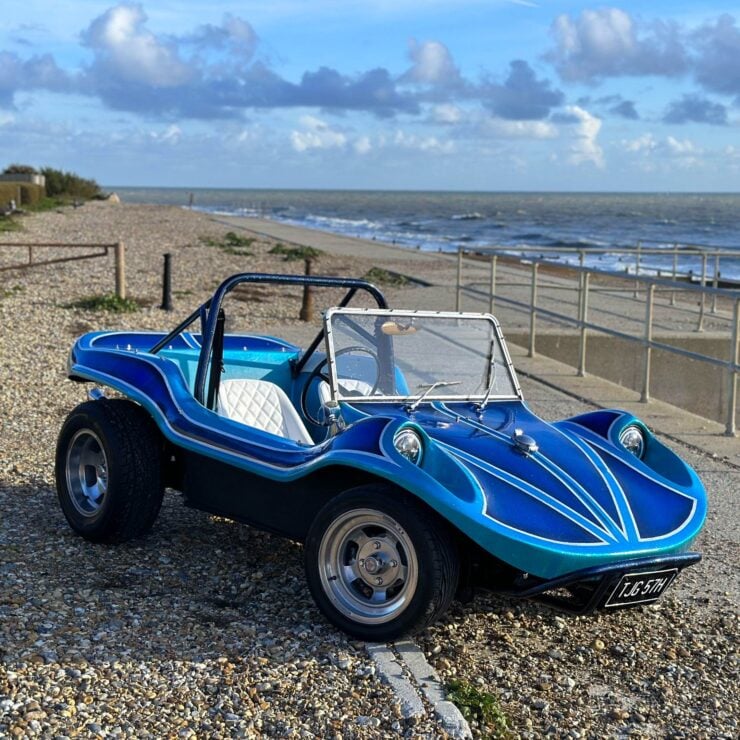
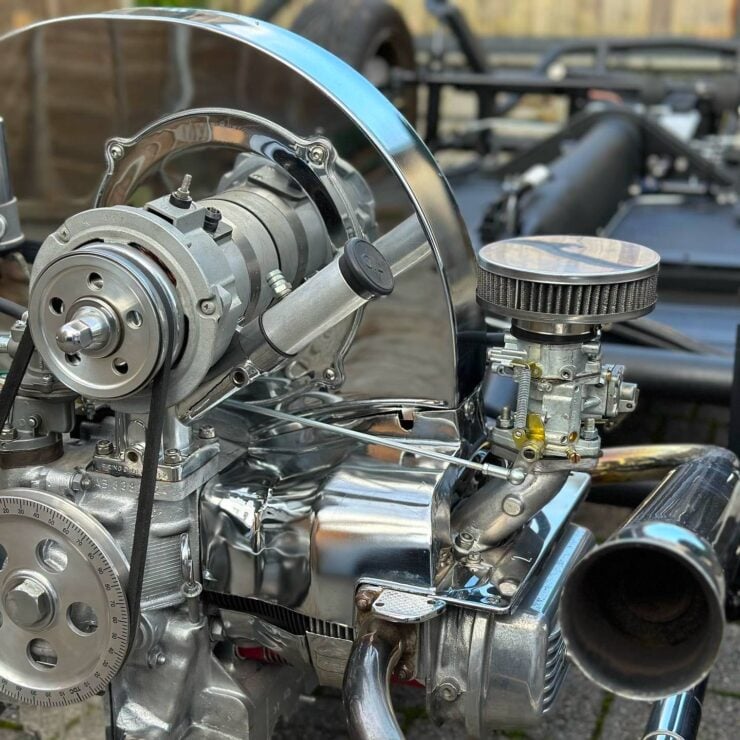
Images courtesy of Car & Classic

